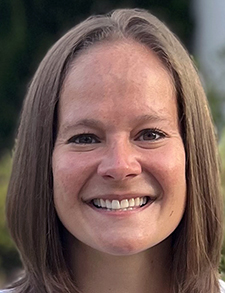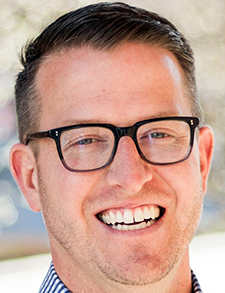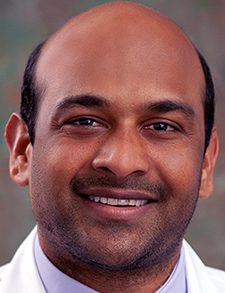Part II of a two-part series
 In his plenary address at SHM’s Converge Conference in Nashville, Tenn., on April 9, hospital medicine founding father Robert Wachter, MD, MHM, posed the question: What will it take to overcome hospital at home’s “Catch-22”?
In his plenary address at SHM’s Converge Conference in Nashville, Tenn., on April 9, hospital medicine founding father Robert Wachter, MD, MHM, posed the question: What will it take to overcome hospital at home’s “Catch-22”?
Everyone knows hospital at home is the right thing to do, Dr. Wachter said. Research has consistently demonstrated lower-cost care, higher patient satisfaction rates, and reduced lengths of stay, readmissions, and complications. “There’s no question it should take off.”
But even though hospital beds can be expensive, unsafe, and in short supply, after more than two decades1 the alternative of hospital at home is still not widely accepted or adopted in the U.S., despite a recent pandemic-related flurry of interest. And the regulatory and reimbursement future remains uncertain.
“Who should be setting up these programs?” Dr. Wachter posed in his address. “Who’s going to be the doctor for hospital at home? Will it be the hospitalist? I hope so.”
Further evolution of the hospitalist model
In last’s month’s issue of The Hospitalist, we described several examples of this new model of acute, hospital-level medical care that’s coordinated and delivered to the patient’s own home. We looked at who qualifies for this care and some of the tasks needed to launch such programs. We reviewed the Centers for Medicare and Medicaid Services’ pandemic emergency waiver that allows hospital at home services to be covered by Medicare and examined the emergence of new corporate models for delivering it.

Dr. Murphy
Stephanie Murphy, DO, a hospitalist at Atrium Health in Charlotte, N.C., and medical director of its hospital at home program, sees this model as a natural step in the evolution of hospital medicine, which previously expanded into post-acute and long-term care, post-discharge clinics, and other outpatient settings. “In my case, it was expansion into directing a transition clinic,” Dr. Murphy said. “Any time you’re trying to evolve a specialty, it can be challenging. In my experience, the forward-thinking approaches hospitalists have demonstrated put us in a good position to be leaders in that evolution.”
Hospitalists are getting more involved in the health care system’s shift from volume to value, she added, and hospital at home is another example of that trend. But there are some different skills hospitalists need to pick up in order to be well-positioned to provide high-level, acute medical care in the patient’s home, outside of the familiar, controlled, sterile environment of the hospital.
“For many programs, that also includes learning how to deliver health care virtually, via telemedicine, for example, how to do a physical examination on a patient virtually using tools like an electronic remote stethoscope or how to recognize pitting edema of the legs on a computer screen.” These skills are not necessarily ingrained in medical school, but they can be taught—or developed, she said.
Quality at home
Care at home is about improving the quality of medical care, Dr. Murphy said. Hospital at home is another approach to doing that in new ways. Quality metrics include transfers back to the hospital, defined as care escalation rates. Other metrics include mortality rates, length of stay, patient experience ratings, readmission rates, and others. “Our readmission rate is 6.1%. If I compare our readmission data to the bricks-and-mortar hospital’s patients, it’s because we’re in the home, where we can proactively address issues like social determinants of health.”
The patient’s home is a dynamic environment, with lots of factors impacting the care. “Hospitalized patients aren’t always truthful about theIr living situations, but in the home, you can see it for yourself and help patients navigate their challenges in different ways,” she said.
“The other thing this evolution gives us as hospitalists is the opportunity for greater job flexibility,” Dr. Murphy said. “The upcoming generation of hospitalists wants flexibility in their work; they want variety. Hospital at home gives hospitalists an opportunity to participate in ways they never did before. It’s different, and it’s exciting. I hope our colleagues take to it because there are real possibilities here.”
Why would a hospitalist choose to work in this setting? “For me, it’s the joy it brings to the patient (who is able to receive acute care in their home), and just being part of something innovative and different, in a safe way, while helping to change the landscape of medicine. That really gets me going—the impact I feel I can make that I couldn’t in the hospital,” she said.

Dr. Kneeland
“We learn things about the patient’s social scenario, lifestyle, and care preferences to the point where evidence-based medicine must be matched to the patient’s real-world context,” said Patrick Kneeland, MD, SFHM, vice president of medical affairs for Denver-based DispatchHealth, which provides hospital at home and other alternate-site services to contracting hospitals and health systems.
“When we are in the home caring for acute illness, we’re also assessing the social environment, how the patient is managing their medications, safe bathing, showering, falls prevention. I have developed a much greater appreciation for how important it can be for a doctor to be in someone’s home.”
Hospital at home has also encouraged hospitalists to be thought partners with their health systems in figuring out these alternate models of care and how to bring acute care out to the home—whether the health system does it directly, or partners with other entities, Dr. Kneeland said. “Home-based care is a lens to really see patients where they are, to treat not only their illness but their social condition, in a totally different way.”
Integration into the planning

Dr. Odeti
Shyam Odeti, MD, MS, FAAFP, MBA, SFHM, chief of hospital medicine for the seven-hospital Carilion Clinic health system based in Roanoke, Va., is part of Carilion’s hospital at home steering team. For the past 16 months, this group has been planning a program that was set to initiate hospital at home services out of Carilion’s flagship Roanoke Memorial Hospital this summer.
The Steering Team’s responsibilities have included identifying, recruiting, and training key partners and stakeholders, including pharmacy, dietary, durable medical equipment, labs, and diagnostic testing, along with a variety of medical specialists who could be called upon for virtual consults when needed for hospital at home patients. Hospital at home will operate much like the hospital when it comes to accessing these specialists, who have gotten comfortable making tele-consults, he said.
A key question for planners is to define what problems they want to solve with their hospital at home, Dr. Odeti said. That could include inpatient bed shortages, nursing staff shortages, patient safety concerns, satisfaction scores, or targeted diseases. Each hospital is unique, with its own unique needs. Take, for example, the stressful impact of hospital stays on elderly patients when an alternative site could be just as effective for their care. Or the patients who say, “I’d rather be at home.”
More and more, hospitalists are able to identify opportunities to offer alternatives for these patients. “They are steering the hospital at home program, and becoming its champions,” he said. “One thing we identified is that it seems natural for the hospitalist to be the provider of care for these patients, functioning as the captain of the ship,” he said. “This is what we do day in and day out as hospitalists—providing acute-level medical care.”
To establish a successful program, one needs professionals who can visit the patient in person twice a day. “That could be a nurse,” he said. Then there’s the medical provider, a doctor or advanced practice provider, who performs the medical care virtually, except for the initial, in-person assessment and admission visit. These can be done in the emergency department or on the hospital floor, where the majority of hospital at home patient referrals typically emanate. “If a change in status demands a home visit by the doctor, we will do that.”
Out of the Carilion health system’s complement of about 100 hospitalists, “we are picking those who are naturals—who are enthusiastic and who really want to do this kind of care. Then we start to integrate them into the planning meetings and the creation of our care processes, so they can learn as we go. We’ll create educational opportunities for them and we’ll make site visits together to establish hospital at home programs,” Dr. Odeti said.
At Carilion, the plan is to have a hospitalist assigned to a full shift for the hospital at home program, even while the caseload remains small in the beginning. Eventually, an advanced practitioner will be recruited and oriented to provide the daily virtual care and twice-daily patient huddles with the team, with a hospitalist assigned to oversee the program and be available for backup. “That’s when the program becomes mature and able to start growing. It’s not only what you do with patients that is important, but how you coordinate care with everyone else involved,” he said.
Dr. Odeti predicted that growth for this model is inevitable because there is a need and the technology continues to advance. “Hospital at home involves a major cultural shift. It will become embedded in the structure of integrated health systems,” he added. Just as with telemedicine, which at first didn’t feel natural or familiar to clinicians. “But it took off after the pandemic hit, to the point where people are now used to it, and much more comfortable with virtual encounters.”
Ultimately, he said, hospital at home will change the culture of hospital care, reworking its processes. “It will take time; that’s to be expected. This is the time you should be investing in program building. As systems become more integrated, they will scale up naturally. You will see the numbers increase and people will become more efficient.”
Larry Beresford is a freelance medical journalist based in Oakland, Calif., a specialist in hospice and palliative care, and a long-time contributor to The Hospitalist.
Reference
- Leff B, et al. Home hospital program: A pilot study. Am Geriatr Soc. 1999;47:697–702.
What can we learn from other countries which have been practicing Hospital at Home ?